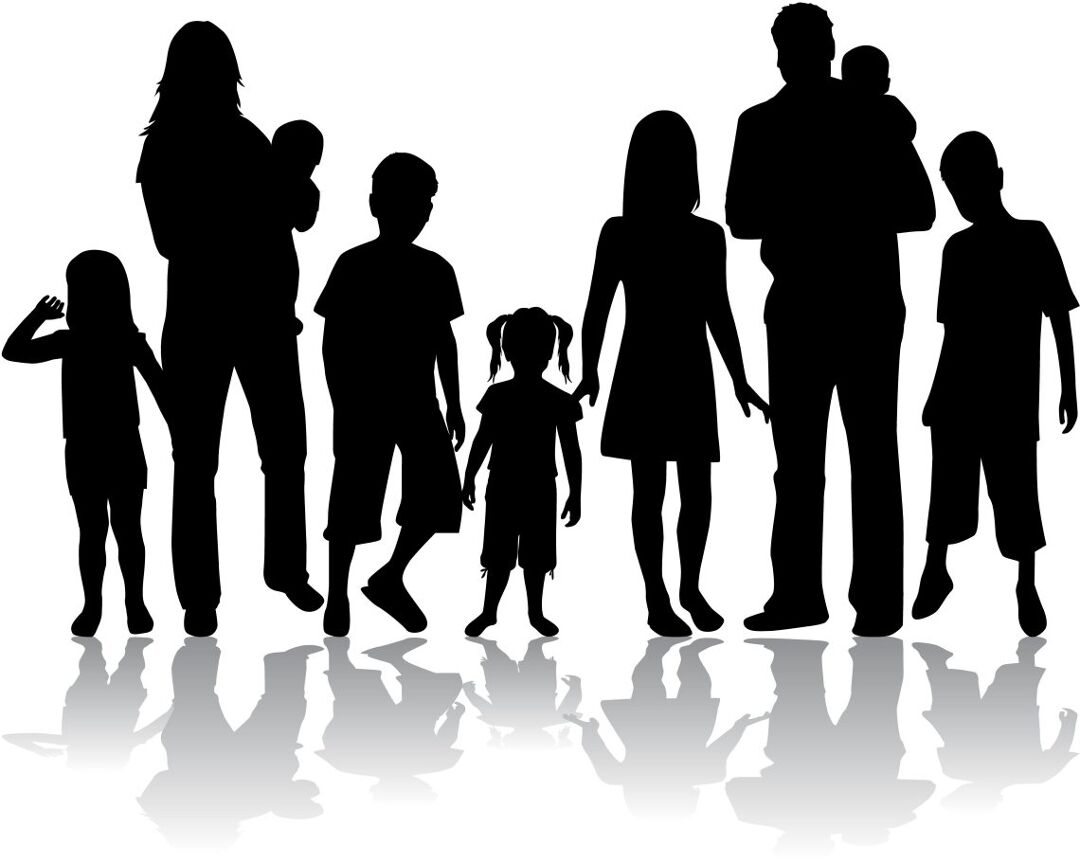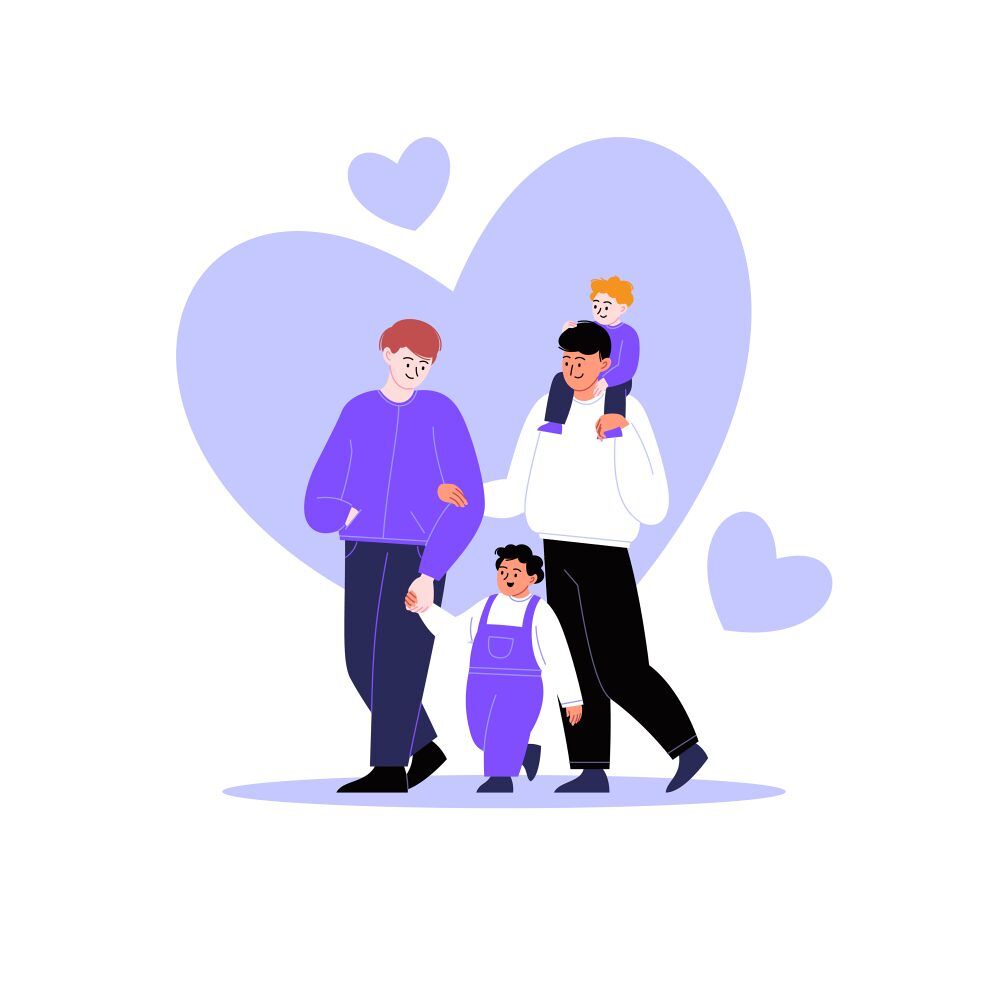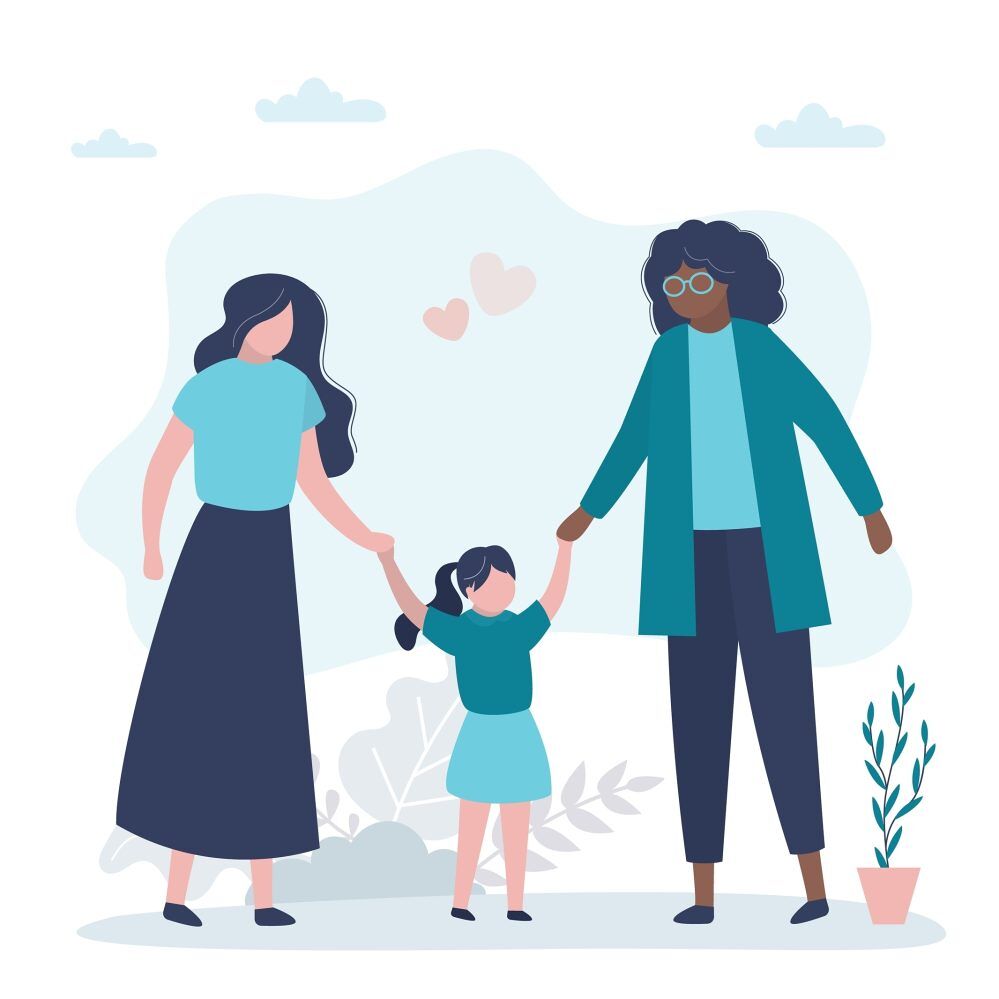
Bill Jones quietly became a gay parent at San Francisco City Hall on February 13, 1969, the first documented American case of a single man legally adopting a child through the standard channels. He and his son, Aaron, became international news a few months later when their story landed in The Associated Press, prompting an outpouring of support from parents globally. Of course, almost no one knew — even as Bill and Aaron wholesomely beamed into living rooms on The Mike Douglas Christmas Special — that Jones was homosexual. As explained in his memoir, Bachelor Father, Jones “lied, as I had lied my whole life about who I loved for fear the truth would not set me free.”
By the time he was lying by exclusion on adoption applications, Jones had tried everything to become a parent, from flying to Cuba to investigate Fidel Castro’s orphanages to attending Sexual Freedom League parties “hoping I could be aroused by a woman and then possibly have a son or daughter the old-fashioned way.” But nothing panned out.
Related
Love & grit: Introducing LGBTQ Nation’s Family Building Issue
Today we have access to family-building options our predecessors could only dream of. Amidst all the horror, that still feels like something to celebrate.
Before the late 1970s, adoption laws excluded LGBTQ+ parents by design. Same-sex relationships were not legally recognized as valid, homosexuality was a crime, and “experts” — many with no formal training in childhood development or family systems — widely believed children needed two-parent, heteronormative upbringings to be “well-adjusted” (The tens of thousands of depressed, traumatized, criminal, and otherwise maladjusted adults produced by two-parent, heterosexual marriages were an inconvenient truth rarely acknowledged).
Never Miss a Beat
Subscribe to our newsletter to stay ahead of the latest LGBTQ+ political news and insights.
Subscribe to our Newsletter today
But limiting adoptions to married straight couples – the demographic most likely to naturally conceive – meant child welfare advocates nationwide often had too many parentless children in need of homes, too few qualifying applicants, and no obvious legal solutions.
“A wonderful social worker set me up with an [adoption] interview,” Jones told NPR in 2015. “She looked up at the ceiling and said, ‘You know, I think homosexuals would make very good parents… So I hope that if a homosexual ever wants to adopt, they don’t tell me.”
A surplus of children, a deficit of parents

There is absolutely nothing new about queer families. LGBTQ+ parents have existed as long as families have, with some quietly birthing biological children within mandated heterosexual marriages and others slyly reframed as “old maids” or “roommates” dutifully taking in orphaned and abandoned local children.
Societal constraints may have historically forced queer adults to conceal intimate relationships, but neither social norms nor religious brimstone have ever extinguished human instinct. The biological imperative to build families is human, not hetero.
What is new, however, is data about queer families. According to Family Equality, “LGBTQ+ people are 7x more likely to foster and adopt than their heterosexual counterparts, and more likely to foster and adopt large sibling groups, older youth, and children with disabilities.” These numbers do not reflect informal fostering and adoption, which means rates may be even higher.
Some of the reasons for this statistical imbalance are obvious — being rejected by one’s family of origin due to sexual orientation or gender identity motivates us to cultivate safer, more inclusive chosen families of our own.
However, legislation originally designed to exclude homosexuals from family building ironically fueled the construction of thousands of queer families, biological and chosen alike.
By the late 1970s, there were more than 500,000 children in foster care. Though legal adoption was exploding in popularity at the time, foster and adoptive parents widely preferred infants to toddlers or juveniles. Segregation and systemic racism, while less intense than 20 years prior, also influenced fostering and adoption participation. Nice, white, and affluent married couples were given priority access to “desirable” infants and little girls in need of parents, with less desirable parents and children falling into bureaucratic purgatory.
The eventual result was scores of “unwanted” kids, especially boys, in foster or institutional care, many displaying behavioral challenges or disabilities as a consequence of the tragedies rendering them parentless.
Overcrowded and low on resources, adoption officials began loosening application requirements. Single adults with stable employment, “family in the area,” and experience with children were gradually allowed to apply.
This is how Jones ended up father to Aaron, a toddler born addicted to heroin and still non-verbal at age 2. A schoolteacher with robust family support in the area, Jones went from the reject pile to “approved” so long as he kept his sexuality secret. He may not have been the very first queer parent to legally adopt and was certainly not the first queer adult to take in a parentless child — he was just the first to (eventually) come out about it.
Paving the way for the “Gayby Boom”

As America’s gay rights, civil rights, and social reform movements gained momentum through the 70s and 80s, opportunities for formal queer family building improved. Exhausted by generations of international war and fatigued by conservative moralizing, Americans started dropping legislation criminalizing same-sex relationships while radically reconsidering what “family” means. With divorce and remarriage, as well as interracial and “out” queer relationship rates publicly climbing, the habit of keeping abandoned or orphaned children in loveless institutions rather than placing them in stable queer homes seemed, frankly, stupid to a growing majority of Americans.
The first “out” gay adoption wouldn’t be documented until the mid-80s with Berkeley, CA, partners Dmitri Belser and Thomas White legally adopting a daughter, Talia, directly from her birth mother. (They’d previously encountered “moral requirement” issues with local agencies, facilitating the private adoption). Belser and White were followed in 1986 by Becky Smith and Annie Affleck, the first openly lesbian couple to adopt yet another abused foster child, 5-year-old Nancy.
Religious and conservative groups predictably hated all of this, some going as far as to meddle in the Smith-Affleck adoption case. But as it turned out, billionaires and church leaders weren’t actually stepping up to relieve states of their parental burden. Faced with a wildly expensive surplus of parentless children and ballooning data from reputable organizations like The American Psychological Association proclaiming LGBTQ+ parents equal to their straight counterparts, pragmatism won.
In 1990, Newsweek proclaimed a new generation of gay parents had produced the first-ever “gayby boom,” validating the widespread existence of queer parents even while ignoring generations of children raised by queer folk.
Laws versus love

A stream of legal rulings over the next decades solidified LGBTQ+ parents’ right to build families alongside their straight peers, most notably 1993’s Adoption of Tammy case, New Jersey’s loud acceptance of same-sex couple adoption applicants in 1997, and 2015’s federal marriage equality ruling.
This doesn’t mean discrimination against queer foster and adoptive parents ever stopped. Some states — Michigan, Mississippi, Nebraska — continued to willfully block same-sex couple adoptions, while others, like Arkansas and Utah, embraced webs of ambiguous policies and dizzying legal hoops designed to exhaust queer applicants.
The last Trump administration was also objectively bad for aspiring queer parents. In 2019, the Department of Health and Human Services issued a new rule allowing federally funded adoption and foster agencies to discriminate against LGBTQ+ applicants, citing “religious freedom.” The mandate enabled taxpayer money to fund religious organizations with discriminatory practices and stirred valid concerns from advocates about the priorities of future Trump appointees.
Legalities aside, queer family building is going nowhere.
Over 300,000 children are currently in American foster care, with over 53,000 adoptions from foster care annually. Some faith-based religious agencies can discriminate against gay couples and individuals, but LGBTQ+ organizations like The Cradle and Paths for Families are still going strong. And as history has already made clear, even the most archaic legislation won’t actually stop queer parents from making, sheltering, or raising children, both biological and chosen.
Subscribe to the LGBTQ Nation newsletter and be the first to know about the latest headlines shaping LGBTQ+ communities worldwide.